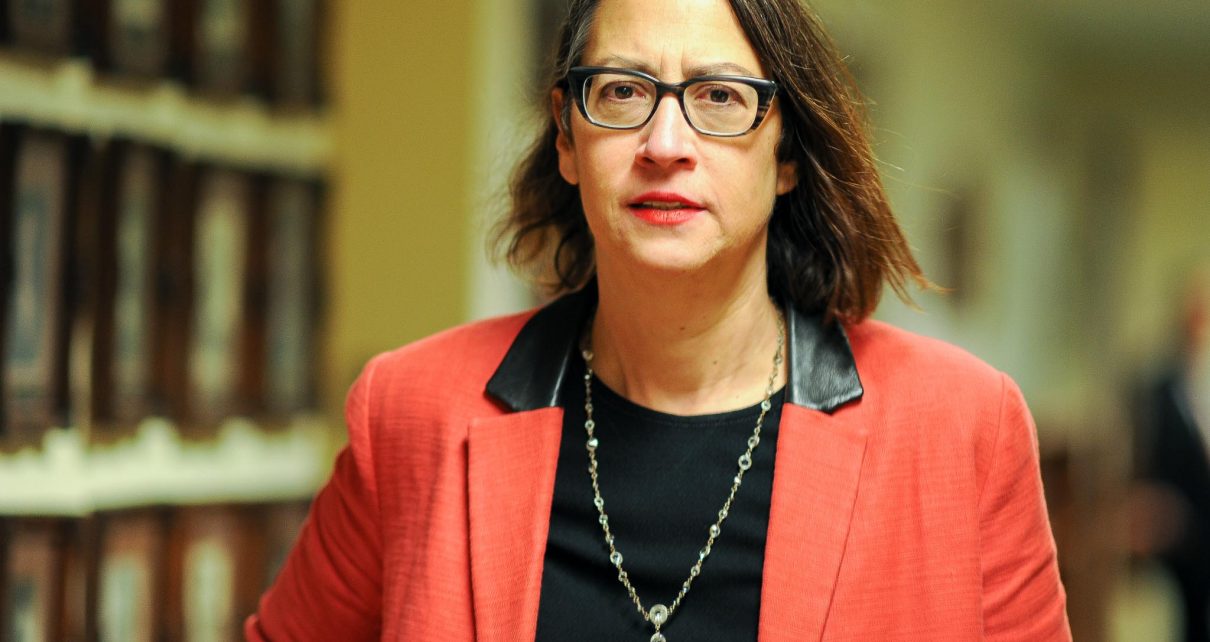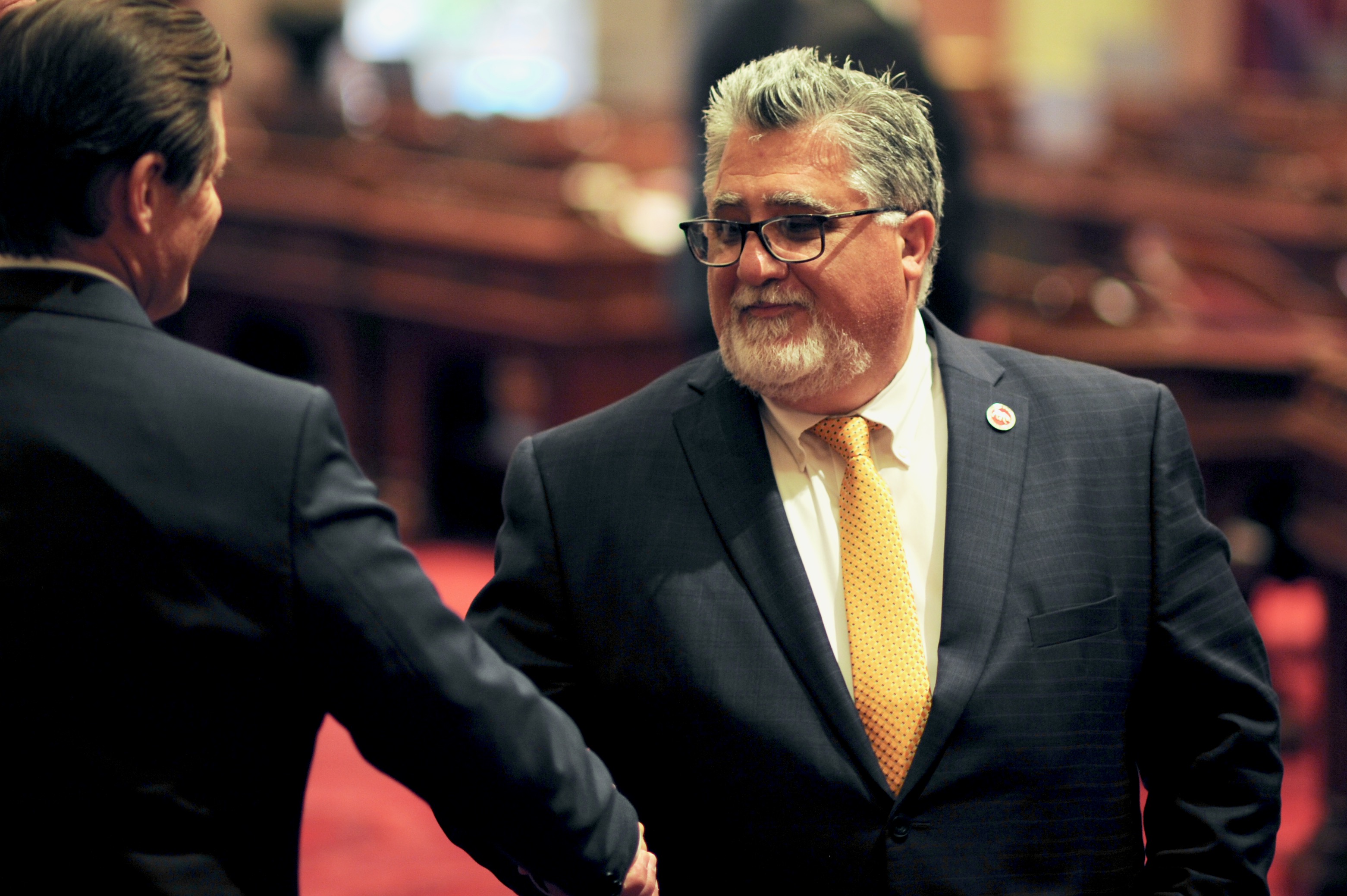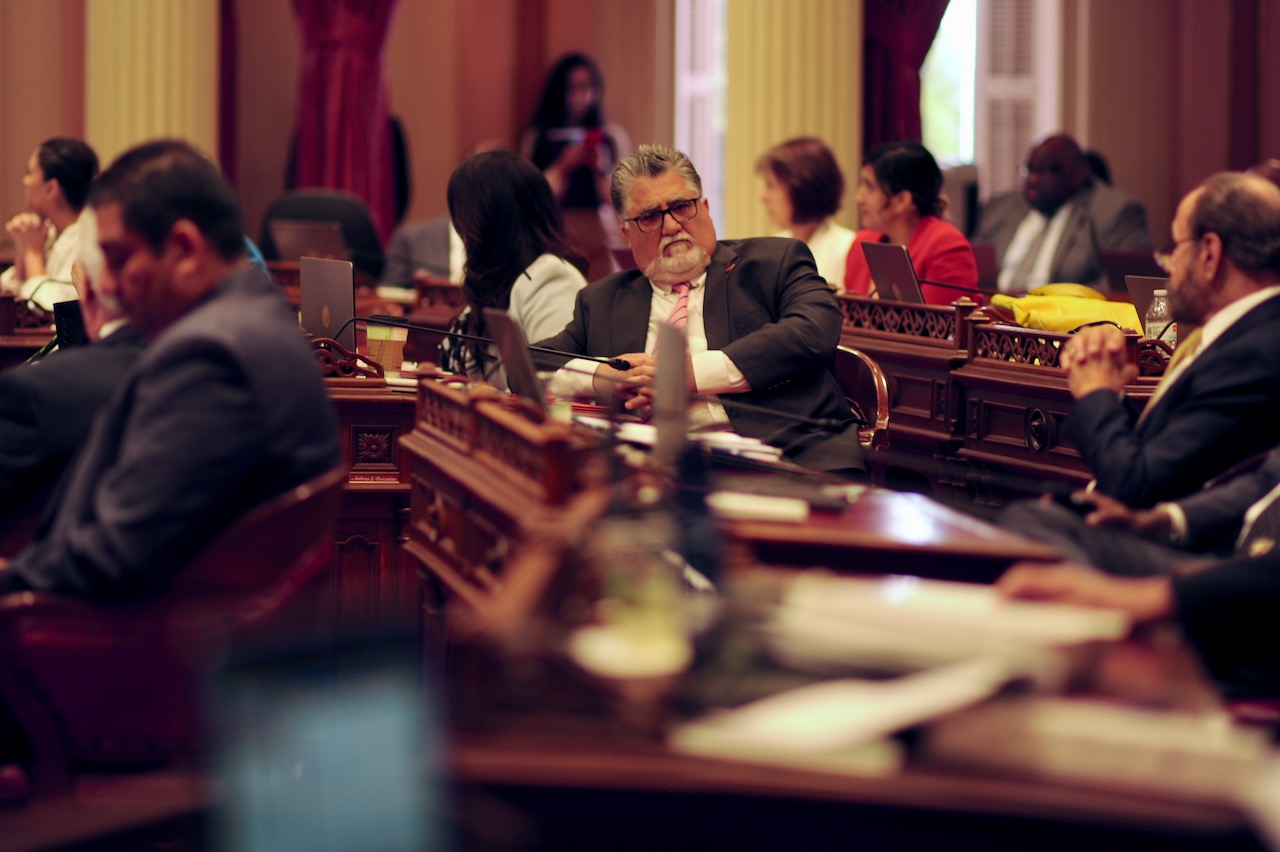
Assemblywoman Laura Friedman. (Photo: Kevin Sanders for California Globe)
California’s School Zone ‘Speed Camera’ Bill Signed Into Law By Gov. Newsom
‘The people who wrote this bill based this solely on accidents – they didn’t try and find better alternatives’
By Evan Symon, October 16, 2023 2:40 pm
A bill that creates a pilot program to install cameras in school zones and high accident areas in six major cities across California was signed into law by Governor Gavin Newsom over the weekend.
Assembly Bill 645, authored by Assemblywoman Laura Friedman (D-Glendale), will establish a Speed Safety System Pilot Program in the cities of Los Angeles, San Jose, Oakland, Glendale, Long Beach, and San Francisco. Under the new program, speed cameras will be set up in school zones, places with speeding problems, and high accident areas until the end of 2031. The bill will require a participating city or city and county to adopt a Speed Safety System Use Policy and a Speed Safety System Impact Report before implementing the program, and will require the participating city or city and county to engage in a public information campaign at least 30 days before implementation of the program, including information relating to when the systems would begin detecting violations and where the systems would be utilized.
Participating cities will also need to issue warning notices rather than notices of violations for violations detected within the first 60 calendar days of the program and, to quell privacy concerns, designate all photographic and administrative records made by a system as confidential. Facial recognition software will also be banned from being used in the program. In addition, AB 645 will also require a city participating in the pilot program to submit a report to evaluate the speed safety system to determine the system’s impact on street safety and economic impact on the communities where the system is utilized.
To activate cameras and get a ticket, cars will need to go 11 MPH or more above the speed limit, with the owner of the car getting a fine starting at $50. Specifically, fines will be of $50, $100, $200 or $500 for breaking the speed limit by 11 mph, 16 mph, 26 mph, or going over 100 mph. The new law also requires cities to reduce fines for those under the poverty line by 80% or offer community service, and requires cities to reduce fines by 50% for individuals 200% above the poverty level.
Assemblywoman Friedman authored the bill because of a rising number of traffic accidents in the state, as well as statistics from cities such as New York City finding that traffic cameras reduced the number of accidents in areas with them anywhere from 17% to 71%. A study by the Federal Highway Administration (FHA) found the figure to be at an average of 54%. Groups supporting the bill, such as Streets Are For Everyone and Walk San Francisco, also pointed to the rise in accidents, with speed cameras being touted as the solution.
“For too long, we have referred to most of these deaths as “accidents” to sweep under the rug the uncomfortable truth: these deaths are preventable,” said Friedman last month in a statement. “Slowing cars down is imperative to saving lives.”
AB 645 had a tumultuous run through both houses throughout the year. Many groups opposed to the bill, including the ACLU, noted that grave privacy concerns, majority local opposition, and violations of digital privacy rights could ultimately kill the bill this year, similar to how past bills, such as 2022’s AB 2336, failed to become law. However, despite growing opposition, AB 645 managed to inch its way past committees and chamber votes. There were some close calls, including a Senate Transportation Committee vote in June where it narrowly passed 10-5 with 1 abstention. But the bill ultimately wound up on Newsom’s desk last month following a 29-6 with 5 abstentions Senate vote and a 62-9 with 9 abstentions Assembly vote.
Breaking news!!! Our speed enforcement bill AB645 just passed the Senate floor! It took 4 years of coalition building to make this victory happen! Thanks to @Scott_Wiener, @StreetsR4Every1 @streetsforall & all the advocates for your partnership! Let’s ask @GavinNewsom to sign! pic.twitter.com/C1YLpT9o3E
— Laura Friedman (@LauraFriedmanCA) September 12, 2023
For a month, the bill, like dozens of others, were untouched by the Governor. The signing deadline this weekend led to Newsom to finally act, signing the camera bill into law officially following multiple attempts dating back to 2017.
AB 645 signed into law
“This is a huge win for safe streets, and so many of us who have worked on this are celebrating today. We are grateful that the Governor saw the urgent need for this life saving solution,” said Jodie Medeiros, executive director of Walk San Francisco, in a statement. “Thank you, Governor Newsom. You are saving lives.
“Dangerous speeding hurts and kills people every day in California, and every possible action must be taken to prevent these senseless tragedies. Finally, cities like San Francisco can start using a proven tool to protect communities from deadly speeding.”
Experts, however, have said that the bill being passed is only the beginning, as much more planning is still needed.
“Newsom signing this was only half the battle,” said Hank Vaughan, a lawyer who has brought many cities with traffic cameras to court. “Assuming that lawsuits don’t kill this bill in the next few years, we now have 6 cities in California who now have have to evaluate and find places to put these cameras. It’s a couple dozen per city, with San Francisco alone getting 33. And there are a ton of restrictions laid out in the bill, including a very confusing line added in an amendment that states that the new program ‘shall place the speed safety systems in locations that are geographically and socioeconomically diverse.’ That’s nuts to a lot of people who want them at the worst intersections.”
“These cameras are supposed to be going up in 2025 and stay in place until 2031, with information to be evaluated afterwards. But, if they want this to go beyond a pilot program, they need to evaluate why so, so many others in California failed. Red light cameras in LA and Pasadena were pulled a decade ago, and others didn’t last more than a few years because of how expensive they were and how much they were hated by drivers. The people who wrote this bill based this solely on accidents. They didn’t try and find better alternatives, of which there are. They didn’t try and ask people at the local level. And they ignored the past.”
“The problem is that the average citizen hates traffic cameras like this, and they always fight to remove them. I think the people behind this bill totally misjudged what the public perception has been and will be of these, as well as what the overall cost will be. Notice supporters never give dollar figures. There’s a reason for that. They’ll need to reduce accidents by a lot frankly to even have a chance at being publicly acceptable.”
Pilot program cameras under AB 645 are expected to come into service beginning in 2025.
- Bill to Require Law Enforcement Disclosure if AI Was Used To Help Write Reports - August 7, 2025
- Gov. Newsom Files FOIA Request To ‘Expose True Cost’ Of L.A. Federal Troop Deployment for Anti-ICE Riots - August 6, 2025
- California Redistricting: How Newsom’s Plan Will Demolish Hard Fought GOP Gains - August 6, 2025





Surveillance state creeping more and more — it will be disguised for “safety”, but Orwellianism will continue until Big Brother is being fully adopted throughout including social scores for using electricity and checking on your whereabouts – if you not conform – you will be limited – remember Obama made sure to have kill switch on cars made after 2025.
Keep alert out there
Here is the definitive stuff against traffic cameras from Jay Beeber, Safer Streets L.A. that caused them to be DROPPED, never to return (we thought), some years ago. Take a look at the link below.
These stupid jerk Dem/Marxist legislators never stop this ridiculous nonsense, no matter what, do they:
https://saferstreetsla.org/
….And the SGVTribune article Evan Symon linked to above has great information in it too:
https://www.sgvtribune.com/2014/01/21/red-light-cameras-being-stopped-across-southern-california-country/
Gov Newsom (D-Bryllcreem) signed a law just a few months back that legalized jaywalking because black people were being disproportionately cited. The same thing will happen with these speed cameras.
Trust me, this is just the start. The car hating Democrats’ goal is to blanket the entire state with speed cameras.
Anything the Democrats can do to make owning and driving a car more expensive and inconvenient, they are on board with. When have the Democrats ever improved people’s lives?
Anything for a dollar. Pretty soon like red light cameras, revenue becomes the deciding factor. School zone signs will start abruptly in such a way you roll right into a trap.
With installation of red-light cameras, L.A. and Walnut experienced an 80% INCREASE in rear-end collisions, most caused by people in the front of the line slamming on the brakes upon seeing a yellow light. Murrietta had a 325% increase. Those cities and others have since scrapped their red-light cameras, as have most cities who used them. You’re absolutely right that it was never about safety but only about revenue. When costs to operate were more than revenues, many cities abandoned them.
When they first appeared near me I did a quick stop on the yellow. I had the satisfaction of watching the CHP behind me picking up stuff off the passenger side floor! Apparently stopping for a yellow is still legal in California! Lol! I still to this day smile when I think about it!
Where can I get a Democrat-exemption license plate? It’ll have some kind of coded signifier that exempts that vehicle from all this stuff. I want one.
I will take your speed cameras and raise you:
– a single can of spray paint
You will place the cameras on poles, you say?
I will place my paint on a pole.
Paint not okay?
Then we shall cool your lens with silly string.
There is no “safe streets” with traffic cameras – only tyranny.
Engineers must design streets for lower overall speeds or engineer people away from the street. One or the other. Not both, like this brain damaged idea of a “school zone” sign on what is normally a 45 or 60mph speedway.
I wonder who has a financial interest in these cameras? There needs to be an investigation. Then again having cameras everywhere is part of the 15 minute gulag program the globalist slave masters are trying to enact.